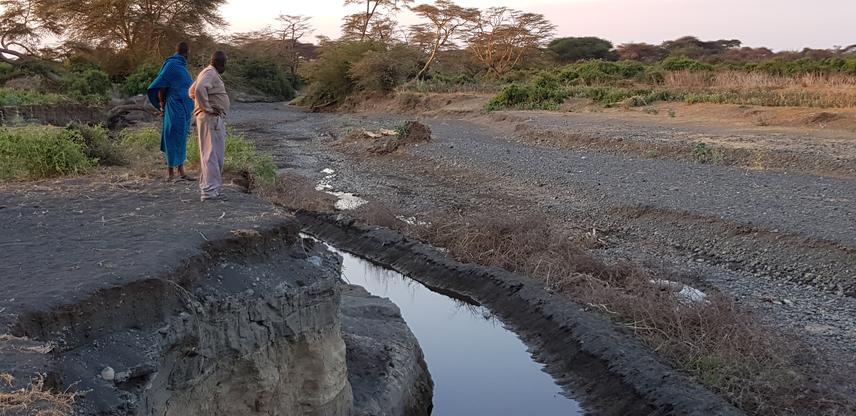Manase Elisa Pallangyo
Other projects
15 Jan 2020
Assessing the Impact of Changes in Surface Water on the Distribution and Space Use of Medium and Large Mammals in the West Kilimanjaro Ecosystem, Tanzania
26 Aug 2021
The Impact of Surface Water Availability and Quality on Physiological Stress in Large Mammals in the West Kilimanjaro Ecosystem, Tanzania
Increasing human population and associated freshwater demands, pose a major threat to freshwater resources and biodiversity, however, the impact of water abstraction and changes in surface water on ecological integrity has not received sufficient attention. This study will address one of fundamental flaws in Tanzania water resources management by quantifying water abstraction and changes in surface water availability and their impact on wildlife, and contribute to ecologically sustainable management of water resources that is vital for both conservation and sustainable livelihoods in the Arusha-Kilimanjaro ecosystem.

Diversion of Ngarenanyuki River for irrigation farming.
Although increasing human population and associated demands on freshwater pose a major threat to freshwater resources and hence biodiversity in sub-Saharan Africa, the impact of water abstraction and changes in surface water availability on ecological integrity has not received sufficient attention. Understanding the impact of water abstraction is critical for protected areas because ecosystem functioning hinge on sustainable water use. A prerequisite for development of sustainable abstraction practices and integrated water resource management for development and conservation is knowledge of ecosystem structure and function in both un-abstracted (baseline) and abstracted sites from both protected and adjacent areas.
The evidence available for underpinning sustainable water use policy in and around National Parks in Tanzania is extremely limited. Thus, even with the best intentions, recommendations for sustainable water use are based on guesswork and intuition rather than evidence. My previous short term project, highlighted that water abstraction has led to change in both plant communities and animal space use in Arusha National Park (Elisa et al., 2016).
This project will extend to an ecosystem scale to further ascertain how water abstraction and changes in surface water is impacting on ecological integrity in the Arusha-Kilimanjaro ecosystem. The Arusha-Kilimanjaro ecosystem, also called the Kilimanjaro landscape, is a wildlife-rich area in the northern Tanzania consisting of Arusha National Park (ANAPA), and Kilimanjaro National Park (KINAPA), and several conservation areas in the west Kilimanjaro. This landscape which is also a trans-boundary ecosystem straddling the Kenya and Tanzania border, harbours a number of charismatic wildlife species including elephants, buffaloes, wildebeest, zebras, gazelles, giraffes, lesser Kudus, striped hyenas, and leopards. It also has communal grazing land, small- to large-scale agricultural land, settlement areas.
The project will provide the evidence for the impact of water abstraction on ecological integrity by
(i) mapping the spatial and temporal distribution of surface water in the Arusha-Kilimanjaro ecosystem
(ii) assessing the quality and quantity of such water
(iii) delivering a report on the ecological impacts of water abstraction and changes on surface water availability in the Arusha-Kilimanjaro ecosystem, Tanzania, particularly in reference to wildlife space use and shifts in vegetation communities around abstraction sites.
These results will also be supported by a spatial evaluation of changes in surface water over time in this landscape using remote sensing. The project finding will be an important prerequisite to the development of ecologically sustainable water resources management in the ecosystem.